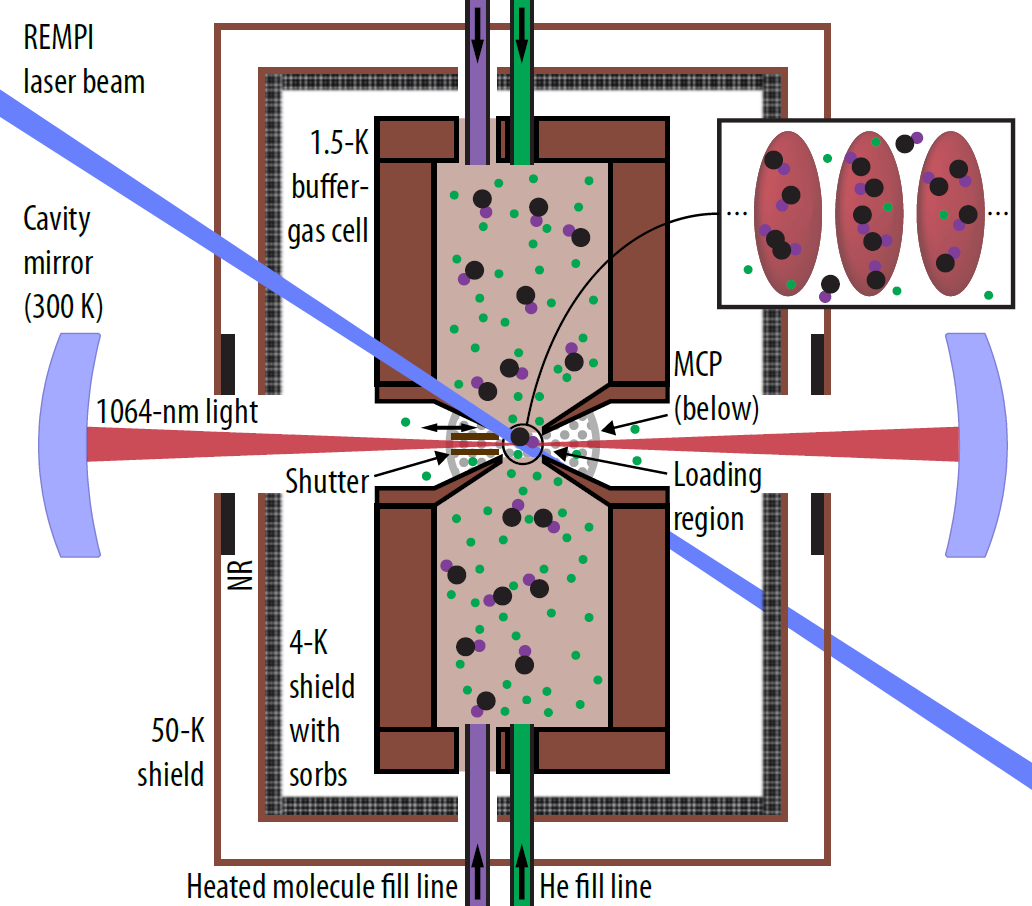Buffer-Gas-Loaded, Deep Optical Trapping of MOlecules
Much of the field of atomic, molecular, and optical (AMO) physics is centered around trapping cold, neutral atoms and molecules, so that they can be manipulated and studied at the quantum level, free from interference from a room-temperature, noisy lab environment. This is usually achieved through laser cooling, where the internal energy level structure of atoms and molecules is exploited to scatter photons from a laser beam off the particles, thereby slowing them down. Unfortunately, it is hard to apply laser cooling to most molecules because of their complicated energy level structures. Despite significant progress across the field, a "universal trap" capable of trapping any chemical species remains elusive, so only a few neutral molecules have so far been trapped and cooled.
Our project aims to make a significant step towards this challenging goal, which will complement currently used traps such as magnetic traps, magneto-optical traps, and shallow or near-resonant dipole traps. In such a dipole trap, molecules are polarized by an oscillating electric field of a laser beam and pulled towards regions with higher light intensity. So far, dipole traps have been limited by laser intensity, and hence have been too shallow to trap all but a small class of molecules which can be laser cooled.
To this end, we are building on work recently demonstrated in our group's Phase Contrast Electron Microscopy project, where a near-concentric, high-power, buildup cavity is used to produce the world’s most intense continuous laser. By using such a cavity, we can realize a far off-resonant, extremely deep optical dipole trap that places much less stringent requirements on the energy level structure of the molecules to be trapped. Because the trap depth for many molecules is orders of magnitude higher than for conventional dipole traps, the species-independent technique of buffer gas cooling can be used instead of laser cooling to cool and load molecules into the trap. Although the high intensity would destroy some chemical species, there is a wide class of small, chemically-stable molecules which would be trapped and not destroyed by the intense beam, including ubiquitous molecules like nitrogen, oxygen, carbon monoxide, and many more.
Schematic design of the trap. For details, see our publication here.
We believe that trapping these molecules will be a significant step towards a variety of important goals in the field. For example, one could load the trap with two different chemical species and watch in real time as molecules react in a cold and controlled environment, or one could evaporatively cool the trapped sample and study ultracold dynamics and phases of molecular matter. Ultimately, the ability to trap a much wider class of molecules will enable spectroscopy, precision measurement, and quantum information processing on molecules chosen for their favorable properties, and not only for their suitability for cooling and trapping. For more details about our work, see our recent publication here. This experiment is under construction, and will hopefully be producing trapped molecular samples in the near future!
Team members
Ashwin Singh
Lothar Maisenbacher
Isaac Pope








